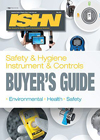A pinch point is produced when two objects come together and there is a possibility that a person could be caught or injured when coming in contact with that area. Pinch points commonly impact fingers / hands, but can impact any area of the body. The injury resulting from a pinch point could be as minor as a blister or as severe as amputation or death. Conveyors, gears, loaders, compactors and other moving equipment are examples of machinery with pinch points.
Common causes of injuries from pinch points
- Not paying attention to the location of hands and feet
- Walking or working in areas with mobile equipment and fixed structures
- Loose clothing, hair or jewelry getting caught in rotating parts or equipment
- Poor condition of equipment and guarding
- Dropping or carelessly handling materials or suspended loads
- Not using the proper work procedures or tools
- Reaching into moving equipment and machinery
Safety controls for pinch points
- Machine guarding: Verify all guarding is in place and effective
- Personal Protective Equipment: Heavy-duty gloves, metacarpal guards, forearm guards, etc. Do not wear gloves around rotating machinery
- Pre-work inspection: Identify potential pinch points before starting work
- Stay in employee designated areas: Always make sure mobile equipment operators know your location
- Lockout/Tagout: Always verify the equipment is de-energized before starting any maintenance work
- Alertness: Drowsiness leads to inattentive work habits and shortcuts
- Operating manuals and work procedures: Always review these before starting work; pinch points may also be identified in these documents
Source: Cooper Equipment Rentals https://cooperequipment.ca/safety-training/toolbox-talks/pinch-points/







